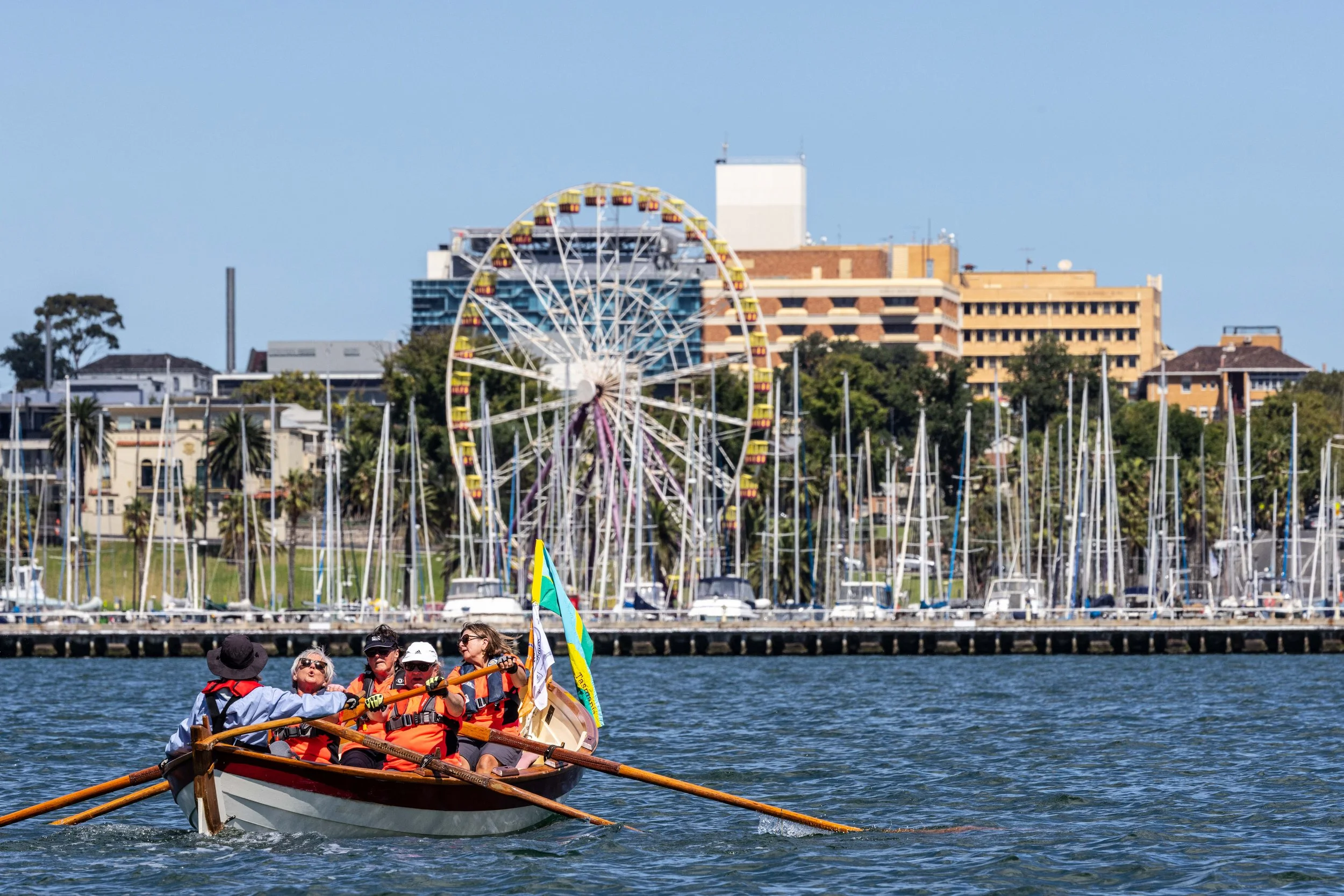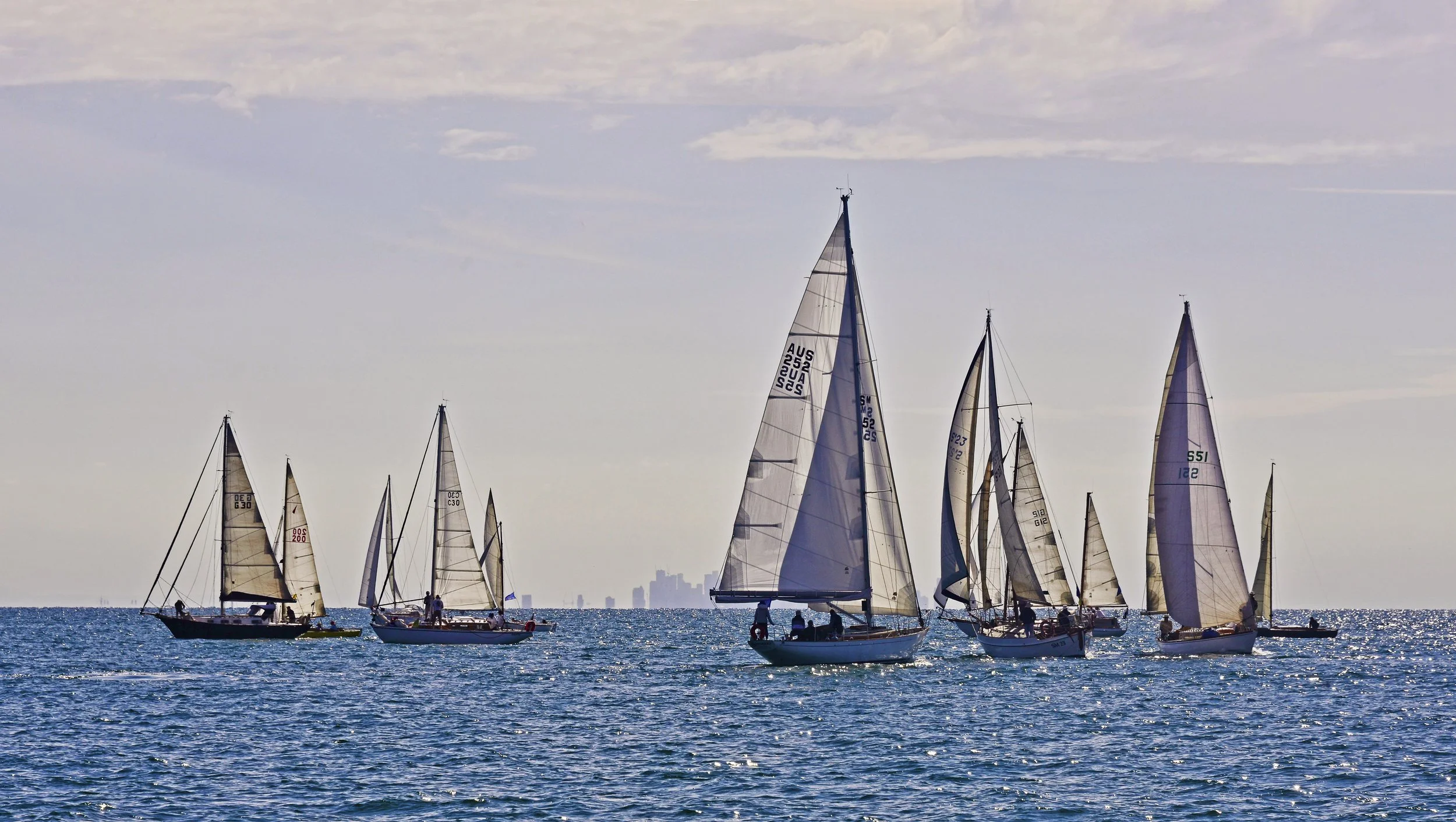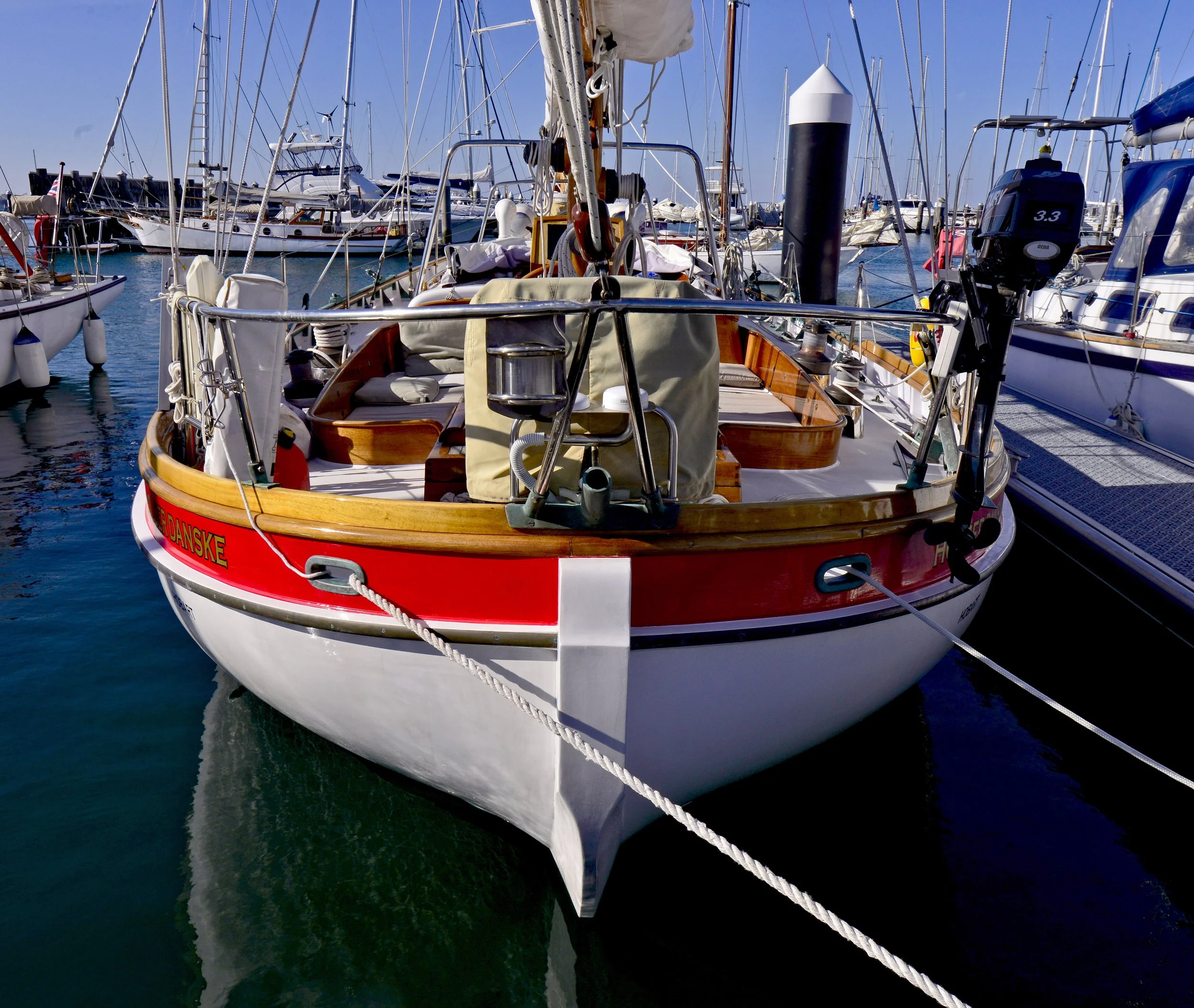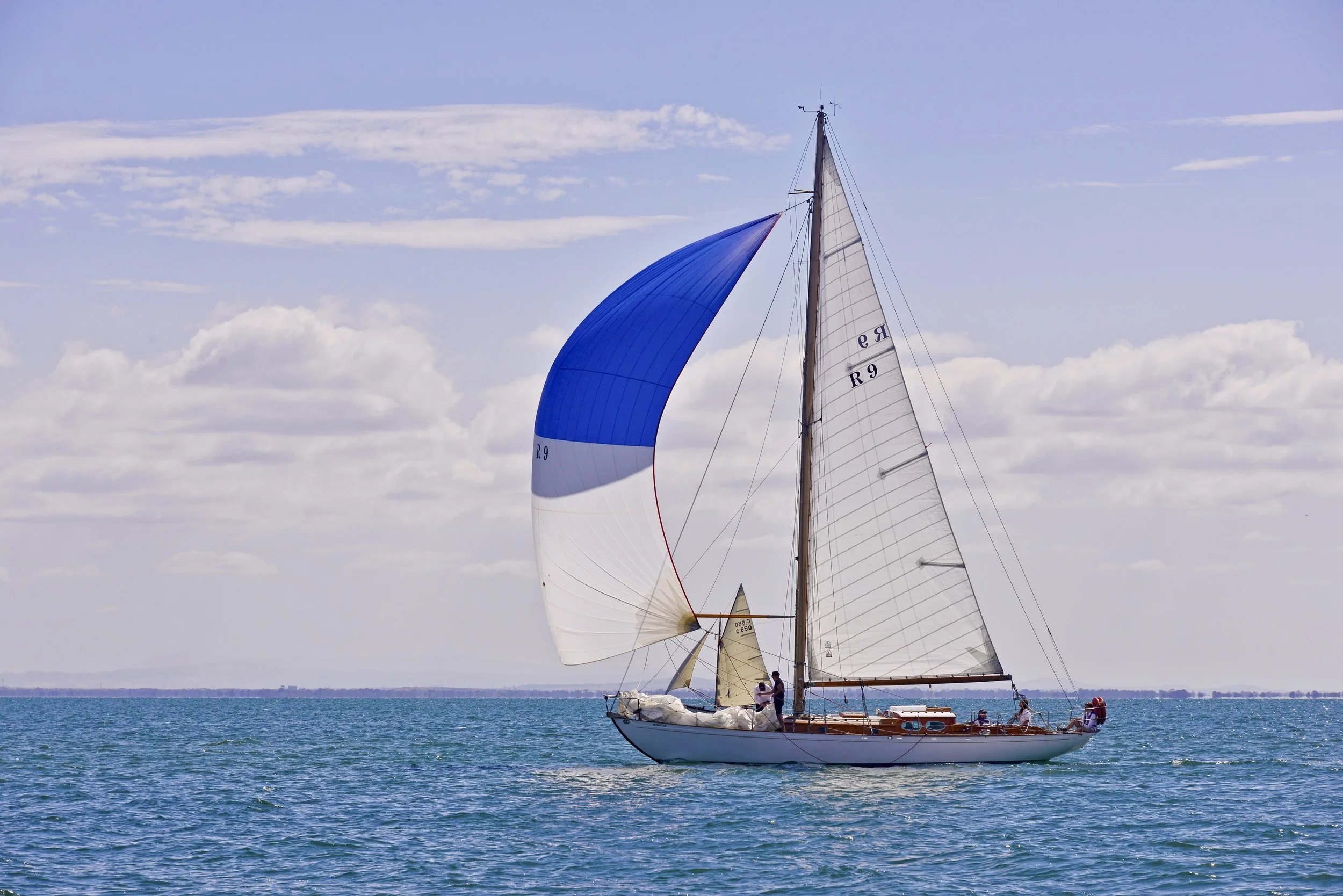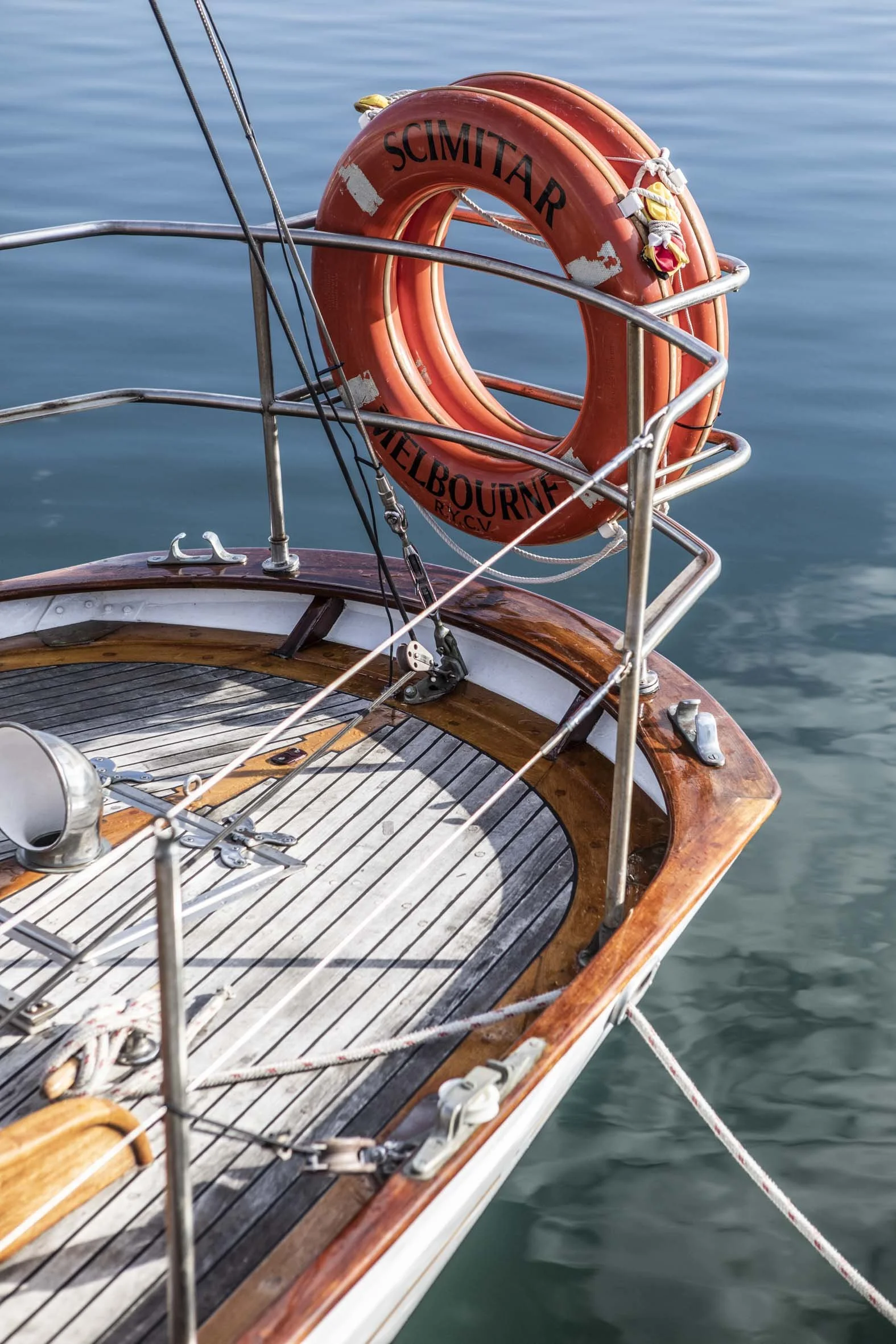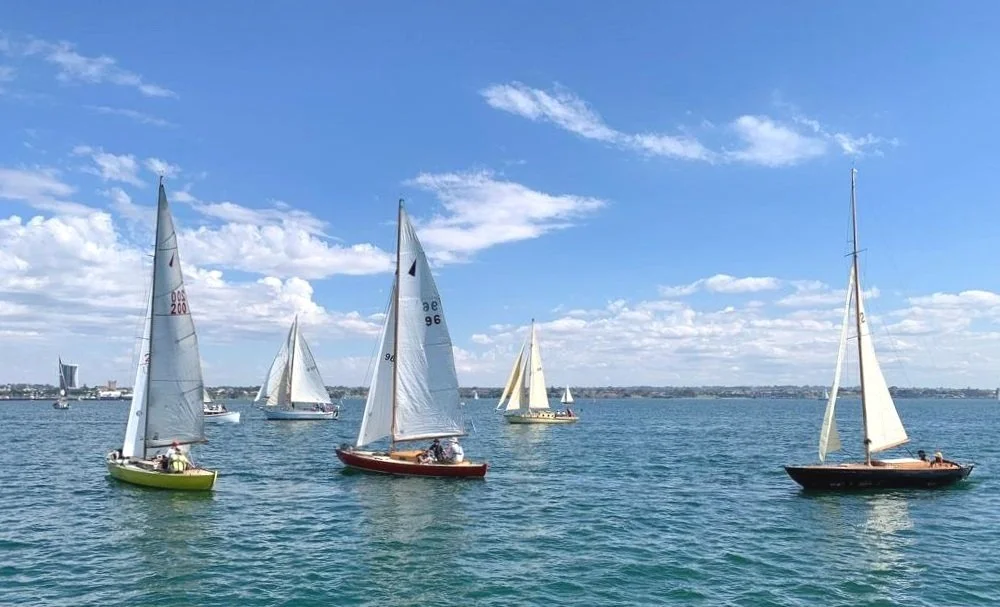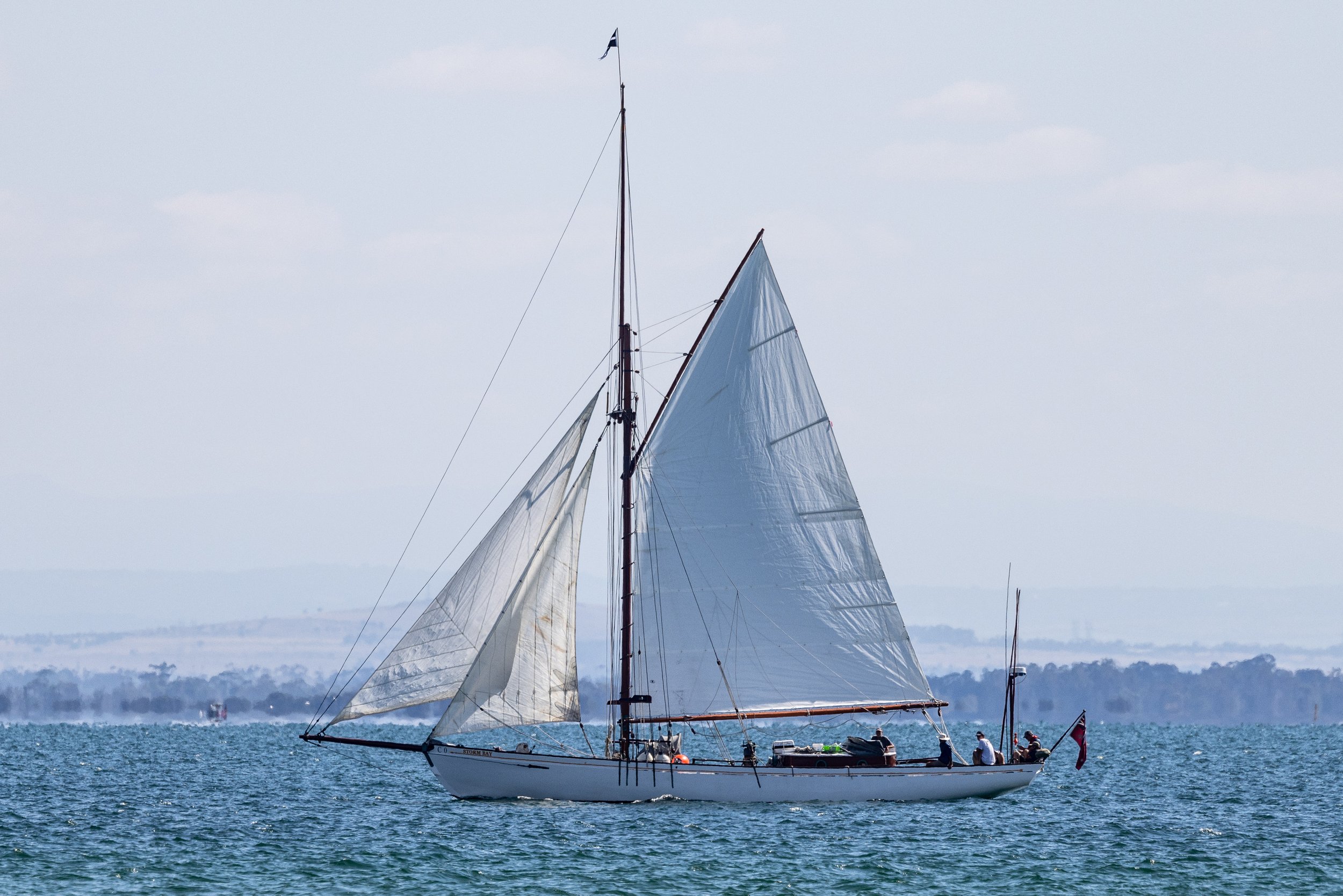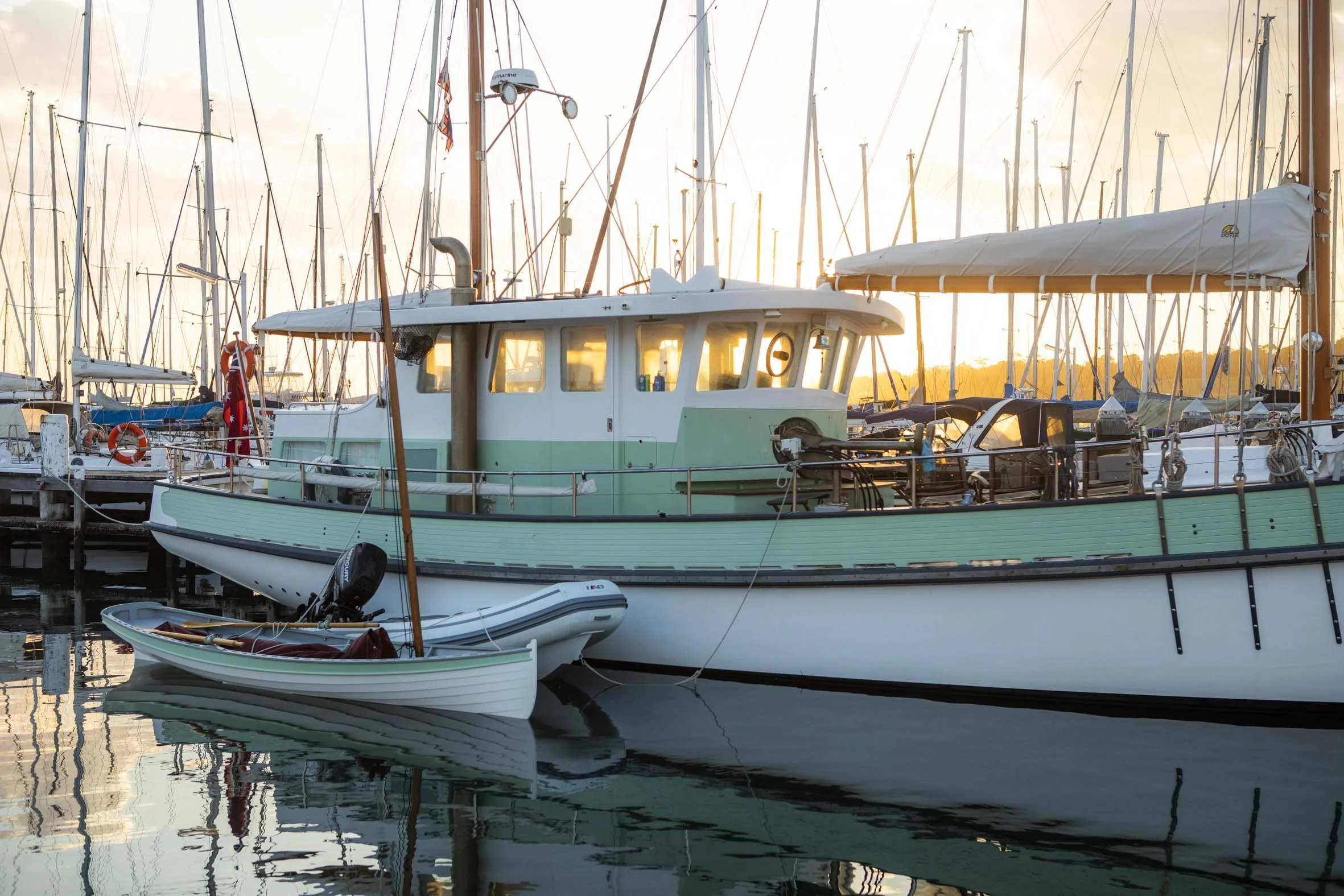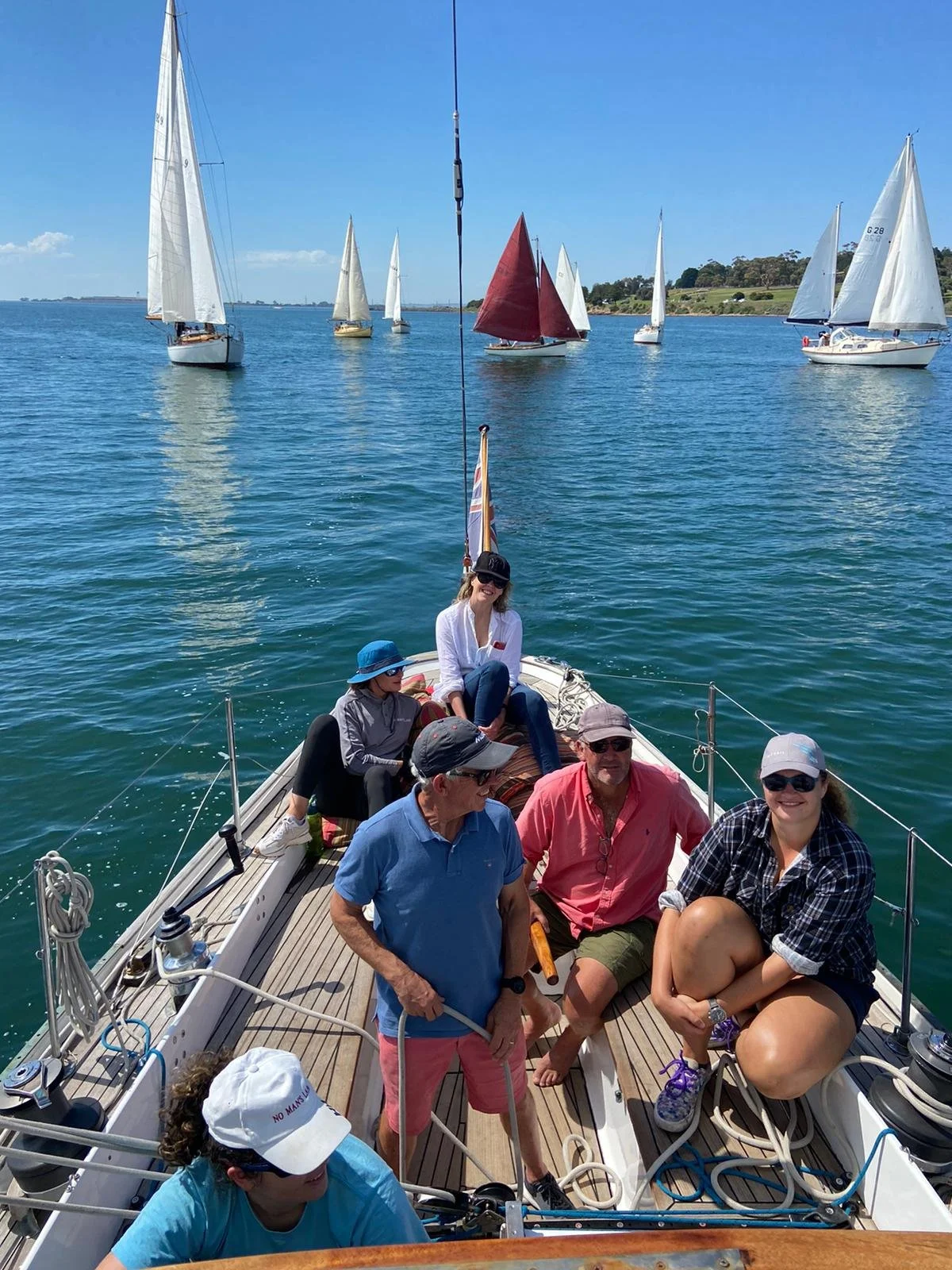The Meaning of Community-GWBF
by Mark Chew
Photo Royal Geelong Yacht Club
I sometimes wonder what’s it all about. Why we do this thing. I worry about the paint peeling off the toe rail on FAIR WINDS. Can I get another season out of the mainsail? Will the insurance company give me another year on the standing rigging?
Part of the answer might be “adventure”. Over the years we have visited some extraordinary places aboard the old vessel. Bass Strait Islands, Pacific Atolls, Cosmopolitan Cities… but that can’t be the whole reason, because there are boats that are far more suitable for adventuring than a 29ft waterline, 66-year-old sloop.
FAIR WINDS during the passage race. Photo by Jane Flowers
Perhaps we do it because we love racing yachts… but again, that’s only partly true because for half the cost we could have a boat twice as fast.
So, the answer must lie somewhere else and wandering around the pontoons and docks at the Geelong Wooden Boat Festival last weekend, it became startling clear to me, we do this for the community. Then I wonder what “community” really means.… From Wikipedia…
“A community is a social unit (a group of living things) with commonality such as norms, religion, values, customs, or identity. Communities may share a sense of place situated in a given geographical area (e.g. a country, village, town, or neighbourhood) or in virtual space (such as SWS!) through communication platforms. Durable relations that extend beyond immediate genealogical ties also define a sense of community, important to their identity, practice, and roles in social institutions such as family, home, work, government, society, or humanity at large.”
Now we are getting somewhere!
Photo Royal Geelong Yacht Club
For most of the boats from the northern Port Phillip Clubs, the weekend began on a Friday afternoon, with a one leg beat to Portarlington. It’s just over twenty miles, and with the twelve knot southerly it was one of those rare sails where beating was a pleasure. Wooden Boats congregated inside the effective but slightly impersonal new harbour, some in pens, some rafted up alongside the jetty. Like all things, I suppose, harbours take time to develop a personality. Incremental layers of history need to build up over decades before a port has a particular character. With the new Melbourne fast ferry, with its mussels and wine from the Bellarine, Portarlington is well on the way to being a genuine destination….(banning jet skis would hasten the process).
The festival proper, started at 1100 the next morning with a race from Port Arlington to Geelong. A fleet of about 30 boats gathered around the start line, trying to keep weigh on in the six knot easterly. A gun; kites up for those with the wherewithal, and the long, hot, slow, downwind meander to Geelong had begun.
Photo by Above and Beyond
It would be wrong not to mention that there was an incident in the prestart where two boats collided. I didn’t see it, and I have no idea who was in the right or wrong. But it’s always a sickening sound, the splintering of wood. No one was hurt, but there was damage to both boats. I spoke with the owners once we had arrived in Geelong. They were understandably a little deflated, but what struck me most was the reasonable way in which they were approaching the situation. Not dismissing it, but accepting that it was an accident and that there is an established process to deal with the mishap. They both commented on how decently the other party had behaved. It just wasn’t personal. This is such a contrast to recent incidents that I have been involved with in modern boat racing.
I should list a few of the craft in the race to give you an idea of the eclectic nature of the fleet.
There was HOLGER DANSKE the famous Aage Nielson Ketch, winner of the 1980 Newport Bermuda race, all the way up from Hobart with her custodian Joy Phillips.
HOLGER DANSKE Photo by Above and Beyond
There was SCIMITAR the 1954 Philip Rhodes designed Sloop owned by the Purcell family and returning for the weekend to Geelong where she began life.
SCIMITAR Photo-Above and Beyond
Photo by Mark Chew
There were three Tumlaren, which, being engineless, deserve special mention for sailing the seventy or so miles required to complete the weekend, not to mention negotiating tight berthing spaces and sleeping on board the open boats.
The three Tumlaren. Left to Right, DINGO, AVIAN & SIROCCO- Photo by Andrew Purcell
There were Couta Boats and Net boats, an H28’s or two and the historic 1967 Admirals Cup winner MERCEDES III helmed by Martin Ryan the CYAA President… And that’s just some of the fleet .
MERCEDES III Photo by Tom Smeaton
Saturday evening for us, meant a gathering, dinner and music aboard the magnificent MARGARET PEARL. Jim Woods has done an incredible job with this craft. I think that when we look back on the 2020’s, this restoration will be seen as pivotal moment in Port Phillip’s wooden boat history. (MARGARET PEARL quite rightly won The Cayzer Boats, Concourse d’Elegance for Wooden Power Boats)
I can testify, that the Paella was delicious, that Kava is a taste I am yet to acquire, and that the three guitars strumming deep into the night on the broad cray boat decks, is a sound I will remember for a long, long time.
Sunday dawned, still and sunny and slightly blurry. (the Kava was soon replaced by rum).
As the fleet, now moored in a group near the Royal Geelong Yacht Club, began to wake up, friends stood on the walkway, chatting quietly, admiring, discussing, and exchanging ideas.
There was just enough wind for the sail past. Tim Phillips’ STORM BAY and Col Anderson’s ACROSPIRE III stole the show, but all the other craft were just happy to be out on the water in such company.
ACROSPIRE III Photo byTom Smeaton
STORM BAY Photo Royal Geelong Yacht Club
I loved seeing Rob McIntyre’s Oughtred Acorn, slicing through the fleet.
The Acorn and the Pearl. Photo by Mark Chew
There was another short race. Everyone tried hard but no-one took the results too seriously. Participation trumped competition.
Photo by Molly Baxter
Back on shore as the bands played…. (special mention to the hypnotic, all girl soul band the “Sweethearts” ) and the prizes were given out a melancholy mood came over me. Why did this have to end? The perfect weather, the beautiful craft, the friendships… did we really have to go home the next day?
I’ll finish this account with a short anecdote. Wooden Boat Festivals have traditional been the provenance of men, usually old and usually white. This year at GWBF it was encouraging to see the number of young people mingling amongst the boats. And the gender balance would have been close to 50/50. The organisers should be congratulated for this. But the faces are still predominantly white. During the day the pontoons are open to the public and families wander amongst the boats admiring the craft. My wife and co-editor, saw one such family, an Indian man and his three small children and invited them aboard FAIR WINDS. Despite their limited English we found out that they had never been on a boat of any sort before. We carefully helped the children down the companionway. Their eyes lit up! “Where do you sleep”, “What’s that for?” “What do you eat?” Their father recorded every moment on his ‘phone so that he could replay it on the television when they got home. As they were leaving after 20 minutes of wonder, we heard the little boy whisper to his father, “Papa…. I want to learn how to sail”
Now that’s how you build a community!



